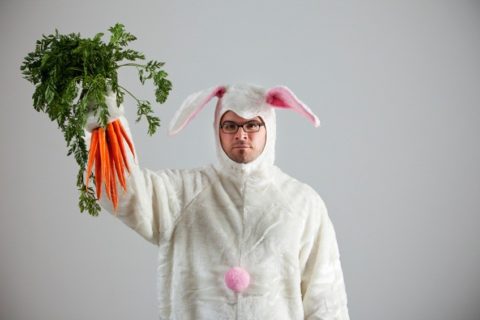Shobha Prasad
A new way of assessing economic status explains why some slum dwellers feel like millionaires.
Why does the slum dweller living in miserable conditions not appear quite as miserable as he should? Conversely, why do those who appear to be affluent complain about not having enough?
In general, we measure affluence linearly using a single common standard, moving from poor to middle class to affluent, and assume that people aspire to reach the top of this ladder. For instance, in India, we follow the Socio-Economic Classification (SEC) where we assume that SEC A corresponds with affluent classes,SEC B and C with the middle classes and those below are seen as Bottom-of-the-Pyramid (BOP) consumers.
But there is more to this than meets the eye. Consider the fact that an enormous number of consumers in India across an economic spectrum ranging from slum dwellers to businessmen at the very tip of the income pyramid describe themselves as ‘middle class’. Some ‘affluent’ consumers even report feeling poor , while some not far above the poverty line feel quite well off.
It appears that consumers have a different way to judge their economic status, which does not necessarily correspond with our own linear assessment of affluence.
The following questions then arise: How do consumers define their level of affluence? What ultimately influences behaviour – the consumer’s absolute level of affluence measured by our standards, or his perceived level of affluence measured by his own standards?
To obtain some answers, we examined qualitative research on aspiration and affluence conducted by our agency over the last decade in India. Additionally, we conducted in-depth interviews with 15 males aged 25-45 years, from SECs A, C and E in Mumbai, to understand how consumers defined their position on the ladder of affluence and its impact on their economic and social behaviour. The theory of Multiple Poverty Lines arose from this analysis.
The Theory
The theory of Multiple Poverty Lines postulates the following:
1. Every individual defines a specific SEC to which he feels he belongs – a reference set. This SEC is a rough definition of an individual’s ‘place in society’ built on the following criteria:
- Family status: the economic and social standing and values of the family he is born into would shape his adult standards and aspirations.
- Extended family: achievements by members of the extended family form a sort of benchmark for the entire extended family.
- Community/caste: each community/caste in India has distinct lifestyles and norms, which form strong reference sets.
- Peer group: occupational groups from similar geographies, with similar education (such as groups of painters, MBAs, etc.) provide benchmarks.
- Personal ability: the individual also develops an understanding of his own abilities, strengths and weaknesses.
This SEC could exist anywhere on an absolute income/affluence pyramid.
2. Each class has its own standards, affluence ceilings and poverty lines. A poverty line is the minimum acceptable lifestyle close to which the individual feels ‘poor’, and below which the lifestyle would be unacceptable to him. A line of aspiration or maximum expected lifestyle is a limit beyond which he does not currently believe he will progress, given his background. In fact there is evidence to suggest that he does not even really try.
3. There are multiple poverty lines and lines of aspiration running right across an absolute pyramid of affluence. A man feels poor close to his poverty line and rich when he reaches his line of aspiration. An individual could feel poor–or feel rich–as per the standards of that class.
4. Affluence and poverty are functions of the difference between the minimum acceptable lifestyle and the actual lifestyle that an individual currently leads.
We find three segments of consumers within each socio-economic stratum:
Strugglers: Close to the poverty line for their class; suffer from low self-esteem; economy-driven; do not have much value for the brands they use.
Strivers: Middle class – achieved basic needs for their social class; stable; self-respecting but aspiring for more; driven by the need for belongingness and status.
Affluent: Performing better than most of their peers in the social class and set norms; status-driven; opinion leaders.
The feeling of affluence would last till an individual once again sets his sight upwards; poverty arises again with a new set of standards.
Sudden windfalls or sudden recession cause the consumer either to splurge irrationally or skimp irrationally.
Implications
The fact that individuals have scaled-down desires and can be made happy at various levels has significant implications. Marketers need to discover the social band that consumers at various levels feel part of and to understand the norms and boundaries of these classes.
This would help in:
Product development: Defining value propositions at different levels of the market, and understanding aspects of even lower-priced products that can create delight. It is possible to delight the consumer within every social class by providing products and images close to his aspiration.
Positioning: With status, belongingness and economy drivers operating at all levels of the market, marketers can consider status-based positioning at the lower end of the market, or economy positioning at the higher end.
Successful Indian brands, such as the motorbike Pulsar, have thrived on a multi-variant strategy – one version to symbolize the aspiration, one to provide an economy version, another positioned for the strivers of each social class.
Communication: Consumers respond to images that project the values at the line of aspiration and do not connect with those that go beyond. There is a need to define and communicate aspiration symbols for each social class.
Finally, to understanding a culture, it is important that we discover the benchmarks people use to define their maximum expected lifestyle, their key to happiness. Many in India seem to subscribe to John Stuart Mill’s theory of happiness: “I have learned to seek my happiness by limiting my desires, rather than in attempting to satisfy them.”
Shobha Prasad is CEO of Drshi Strategic Research Services.




1 comment
myTectra provides online training as well as classroom training. The trainers here are real time experienced professionals in that particular domain. The training is more on Practical sessions.
myTectra not only Provide students on most popular courses like Machine learning, python, AWS and much more but also Trains corporate training for professionals. We have around 600+ courses and experienced trainers for all the courses.